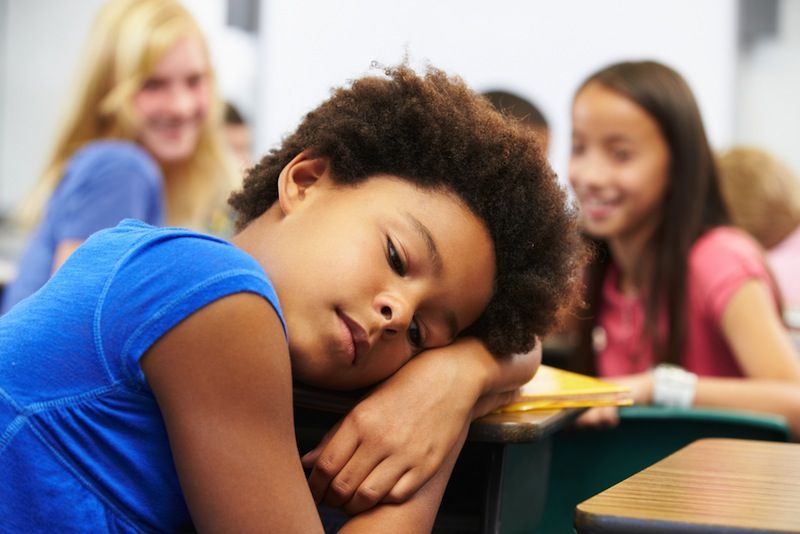Popularity's Downside: Increased Risk of Bullying

The school misfit can get targeted for bullying. But being near the top of the social heap is no picnic, either.
In fact, new research finds that as kids become more popular, they face a greater risk of getting bullied — at least until they reach the very pinnacle of their school's social ladder, at which point they escape the fray.
"A lot of mean and cruel behavior is rooted in the competition for status," said study researcher Bob Faris, a sociologist at the University of California, Davis. [10 Scientific Tips for Raising Happy Kids]
Popularity and bullying
Falling victim to bullying can have long-lasting effects on mental health, research shows. Frequent targets show emotional scarring years after the bullying ends, according to research published Feb. 17 in the journal Pediatrics. Bullying is also associated with suicidal thoughts.
There's no doubt that some victims are targeted for stereotypical reasons — they don't fit in; they have body-image issues, or their sexuality is something other than heterosexual, for example. The social science lingo for such bullying is "normative targeting," meaning kids picking on others who break social norms.
Faris is interested in a secondary type of bullying, what he and his colleagues call "instrumental targeting." These interactions use bullying as an instrument or tool to gain social status.
Sign up for the Live Science daily newsletter now
Get the world’s most fascinating discoveries delivered straight to your inbox.
In 2011, Faris found that kids became more aggressive as they moved up the social pecking order. His new study examines victimization and popularity, and finds that not only does popularity increase the chance of targeting, but any given bullying incident also hurts more, emotionally, for a popular kid than an unpopular one.
Vying for status
Faris and his colleague Diane Felmlee of Pennsylvania State University surveyed more than 4,000 kids at schools in three North Carolina counties. This was part of a larger study of middle- and high-school students called the Context of Adolescent Substance Use.
Each student was asked to name their friends, as well as students who picked on them and whom they picked on. With this information, the researchers constructed a social network for the schools. The networks look a little like messy birds' nests, Faris told Live Science. In the dense core, there are popular, highly connected kids. The connections become sparser on the outskirts of the network, with a few isolated, friendless loners at the very edges.
These loners are frequent targets for bullying. But for most kids with some connections, popularity doesn't exactly pay. The closer to the center of the network someone ranked, the more likely the student was to report being bullied, the researchers found. The risk increased steadily until the very tip of the social pyramid: Kids in the 99th percentile of popularity were victimized only 25 percent as much as kids in the 94th percentile.
With popularity, "you become a more attractive target," Faris said. "And then, at some point, a few kids climb up above the fray."
These top kids may be extremely nice, and thus win popularity without bullying, Faris said. Or, in some cases, they may have the "luxury" of niceness," he said, because no one is trying to topple them from their perches.
Bullying scars
The researchers also asked the students about their levels of anxiety, depression and anger, and the extent to which they felt at home in their schools. Unsurprisingly, the results showed that kids who are frequently targeted are generally unhappy. But for any given incident of bullying, the popular kids feel more emotionally hurt than less popular kids, the researchers found.
That's likely because the kids who are frequently targeted already feel down, Faris said. The higher-status students have further to fall, metaphorically.
Instrumental bullying deserves attention, because research suggests this nasty way of climbing the social ladder does work, Faris said. And bullying programs rarely address this sort of behavior, focusing more on promoting empathy for the kids on the outside of the social network.
"If it's being rewarded, you have to address that aspect," Faris said. Kids don't necessarily even think of instrumental targeting as bullying, he added, and may refer to it as "drama" or "beefs" instead.
"I hope that … those kids who may find themselves caught up in some drama with their friends may look at this in a different light," Faris said. "And I'm hoping that, ideally, kids would not value social status as much as they do, because high school ends, inevitably, but the pain that can be caused can last a long time."
The researchers report their findings today (April 1) in the journal American Sociological Review.
Follow Stephanie Pappas on Twitter and Google+. Follow us @livescience, Facebook & Google+. Original article on Live Science.

Stephanie Pappas is a contributing writer for Live Science, covering topics ranging from geoscience to archaeology to the human brain and behavior. She was previously a senior writer for Live Science but is now a freelancer based in Denver, Colorado, and regularly contributes to Scientific American and The Monitor, the monthly magazine of the American Psychological Association. Stephanie received a bachelor's degree in psychology from the University of South Carolina and a graduate certificate in science communication from the University of California, Santa Cruz.











